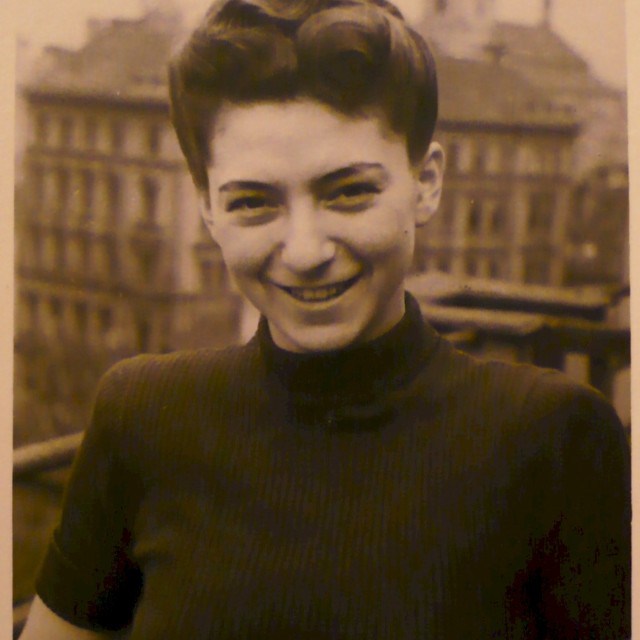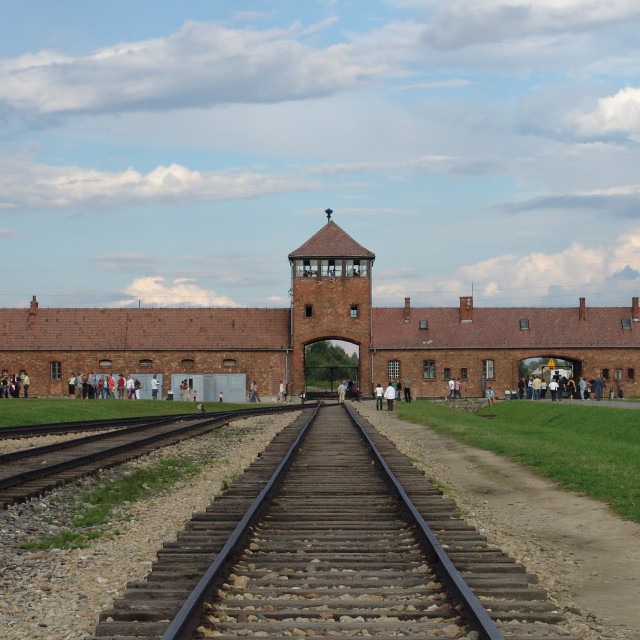He Looked Like a Dance Master
Helena Krouská describes the arrival to Osvětim: “Darkness, spotlights, guards, prisoners and dogs running around. Despite that we still believed that we are going there to work. We started to get out of the train. As now I know, there was standing Dr. Mengele – in a hat, handsome officer, looking like an elegant dance master who conducts polonaise. His arms were just showing to the left, to the right, to the left, to the right. And a loudspeaker was saying: ‛Mothers with children, the old, the ill and people incapable of work to the right. The work capable to the left…’” To go to the right meant to go to the gas chamber – Helena Krouská got to the left side group. “There were about two hundred women in a big hall. We saw our men behind a glass wall and somebody said: ‛These are our men.’ That was the last time I saw my husband. I remember a woman prisoner that approached to us and asked us: ‛Did the children from Terezín came with you?!’ We wanted to please her and said: ‛Yes, but they went to the other side.’ And she started to yell: ‛Look at those chimneys, to the fire and the smoke. These are my children!’ And for the first time I heard what was happening in Auschwitz.”
Hodnocení
Hodnotilo 0 lidí
Routes
Not a part of any route.
Comments
No comments yet.













